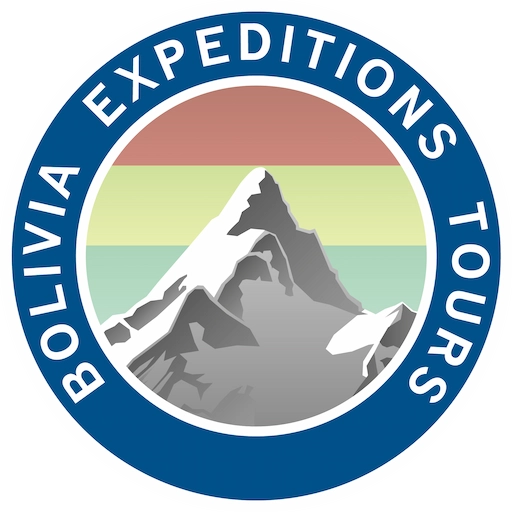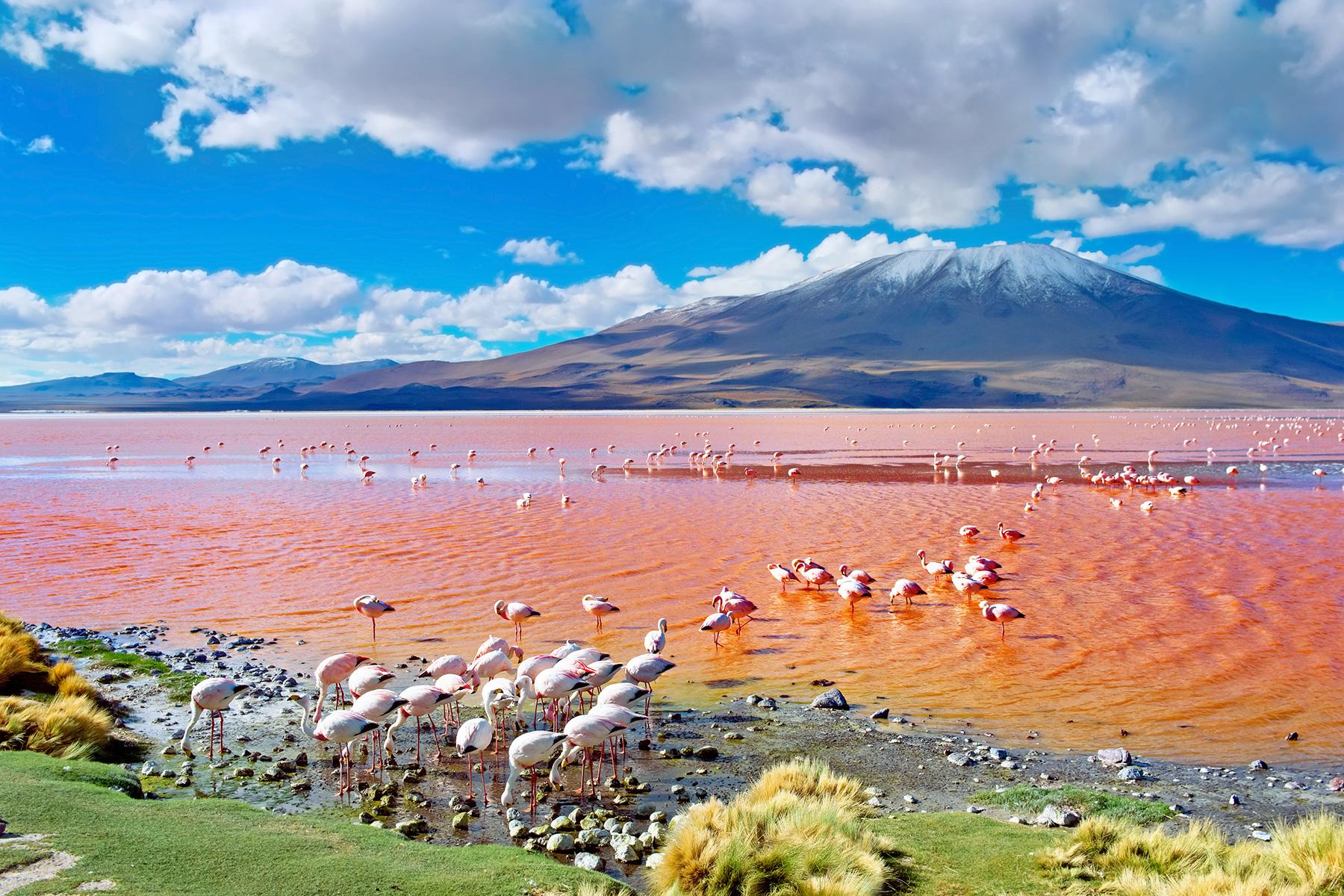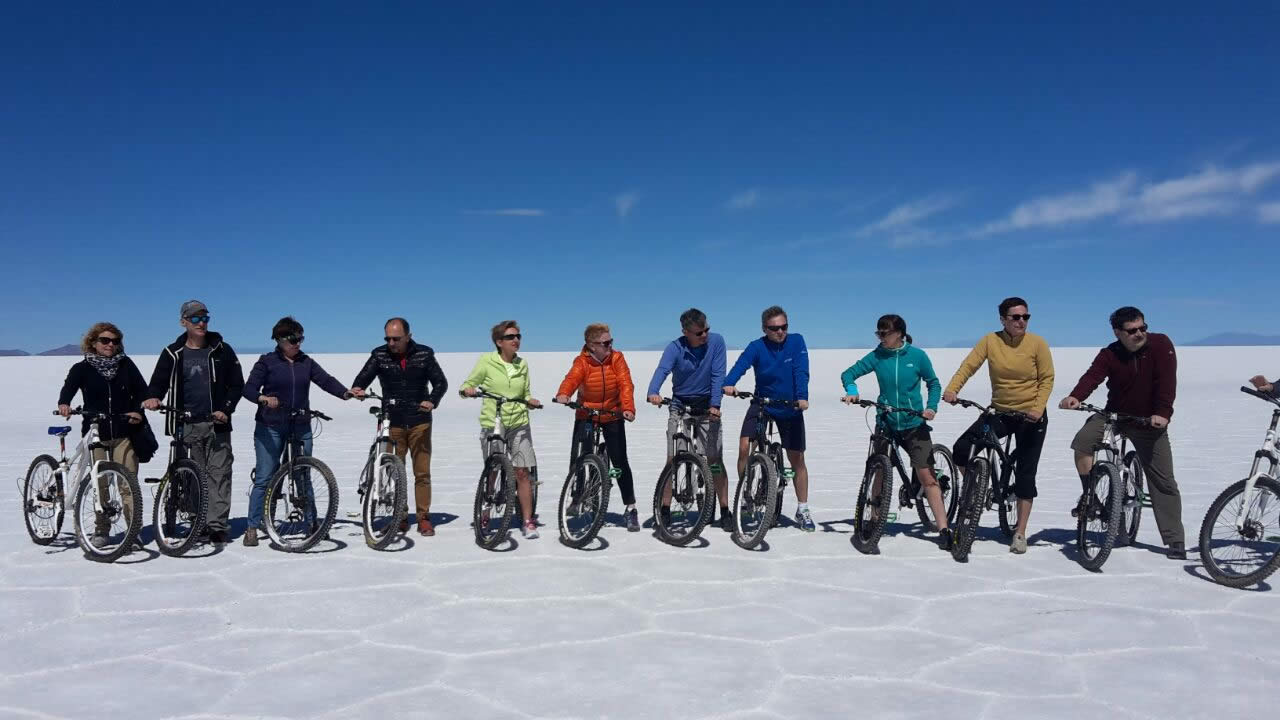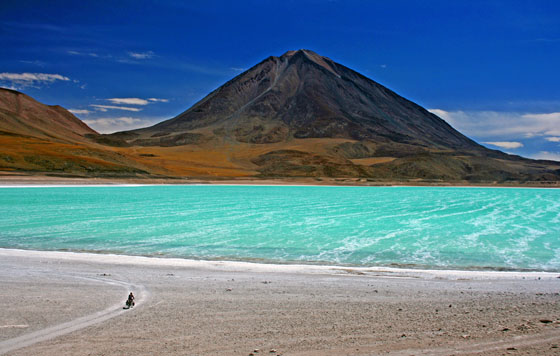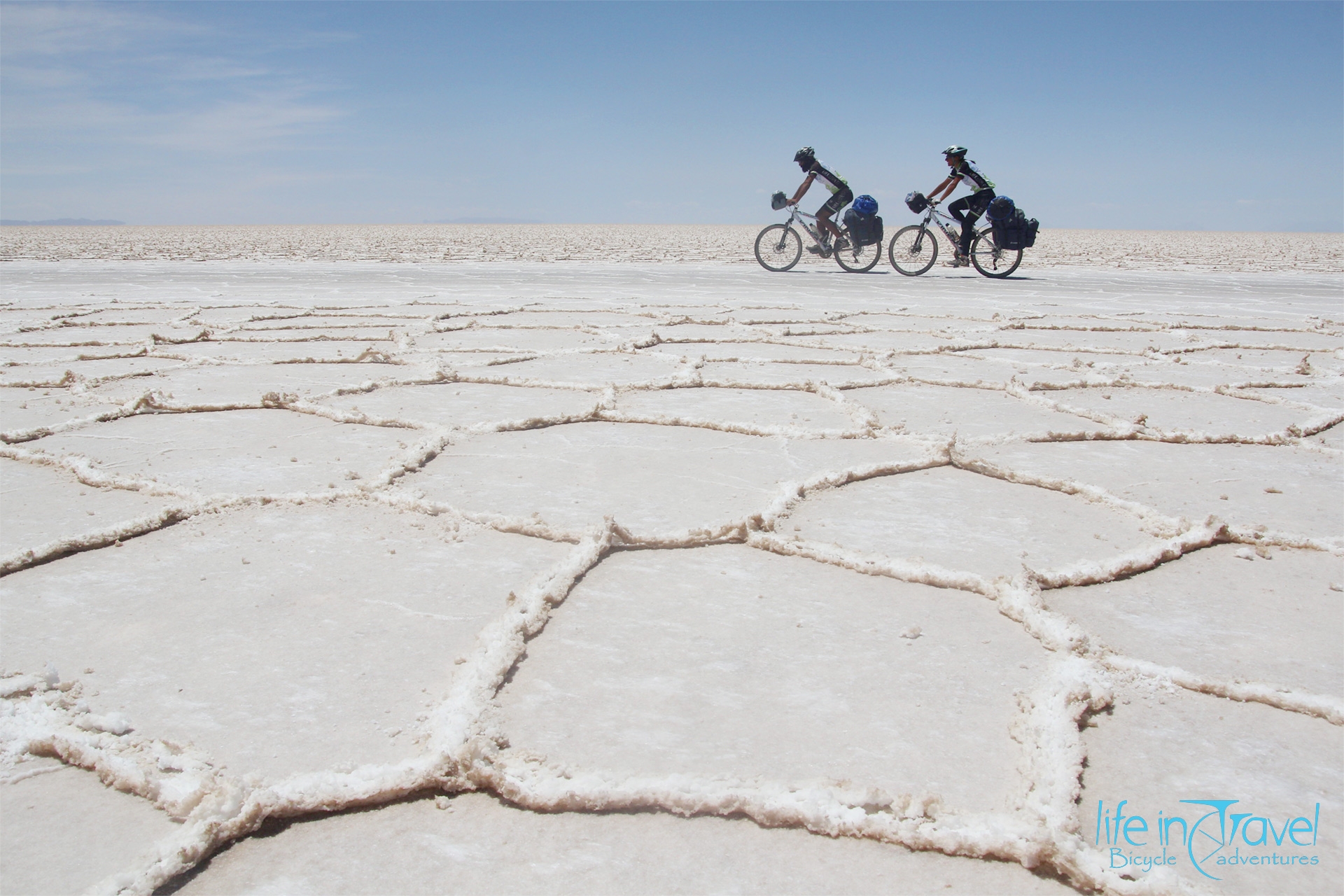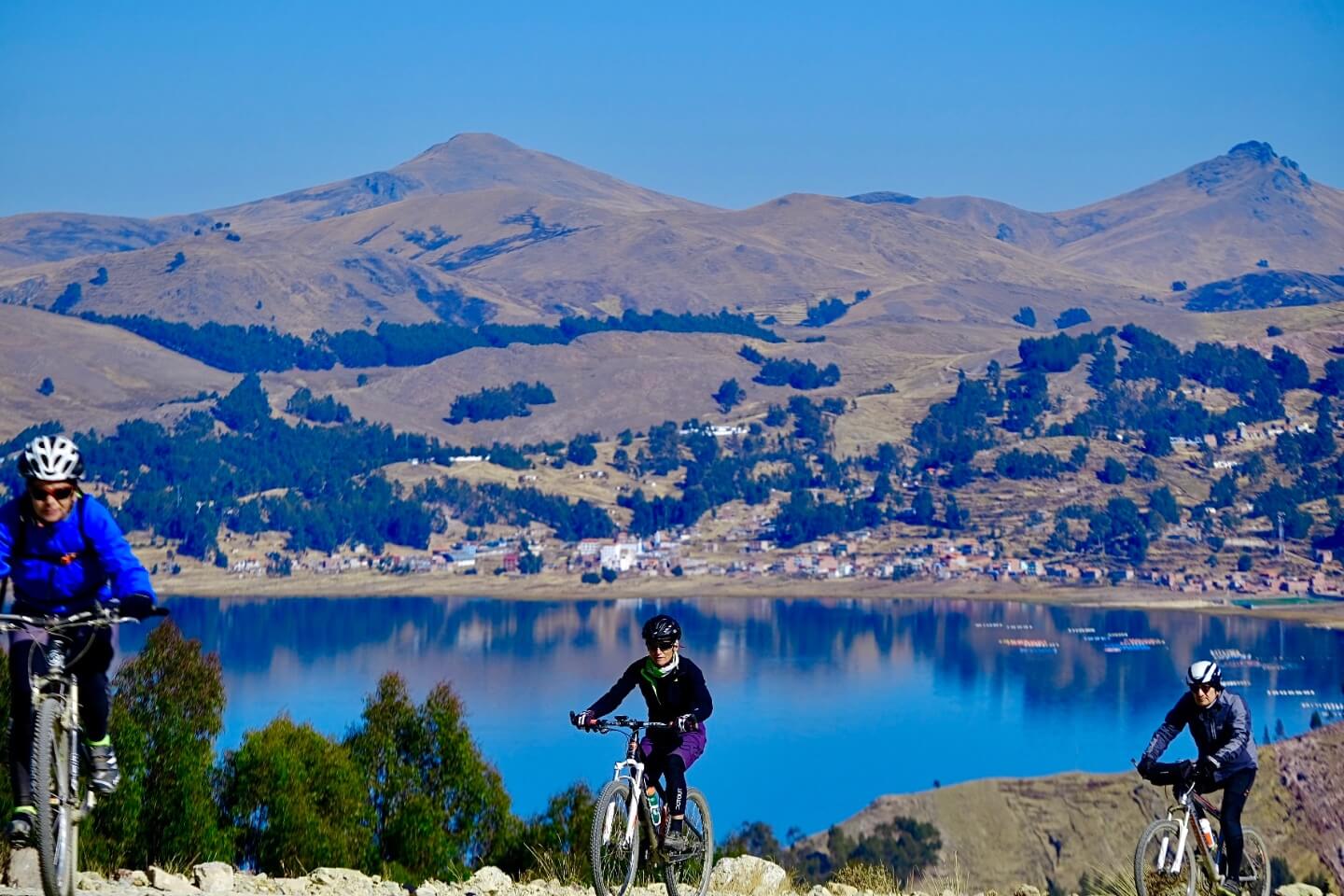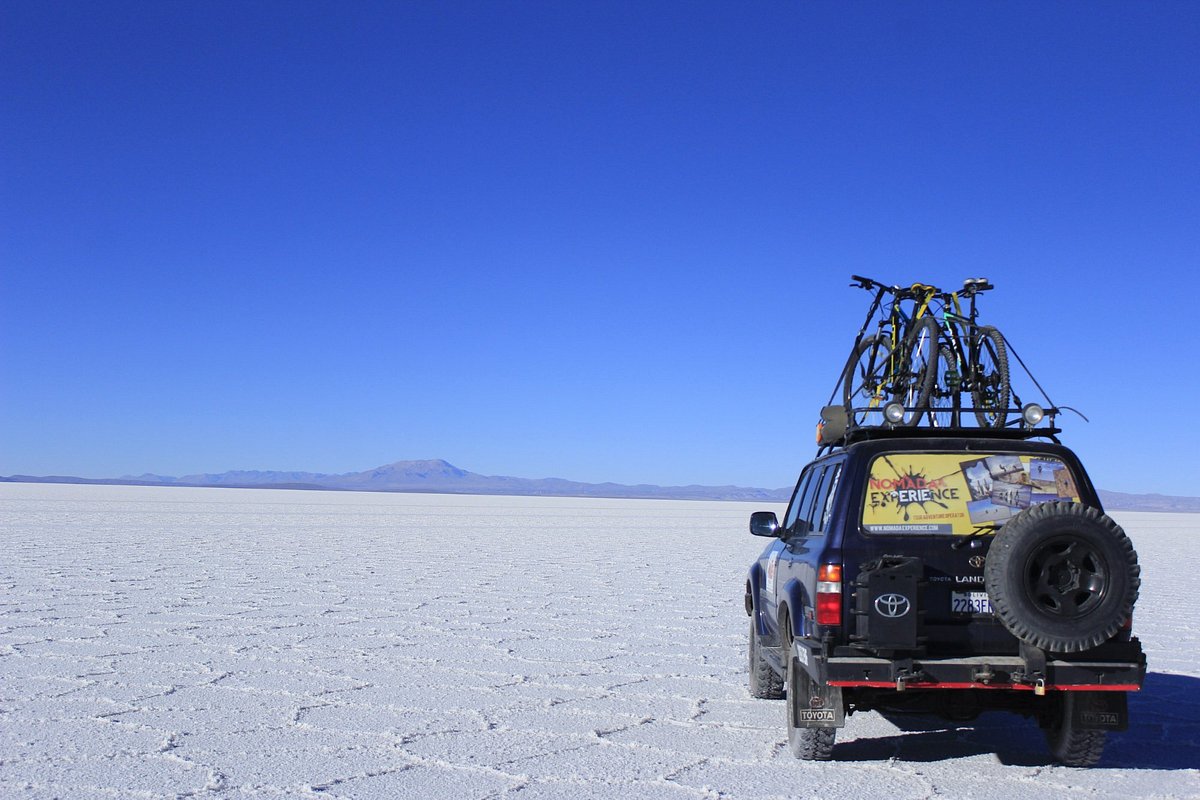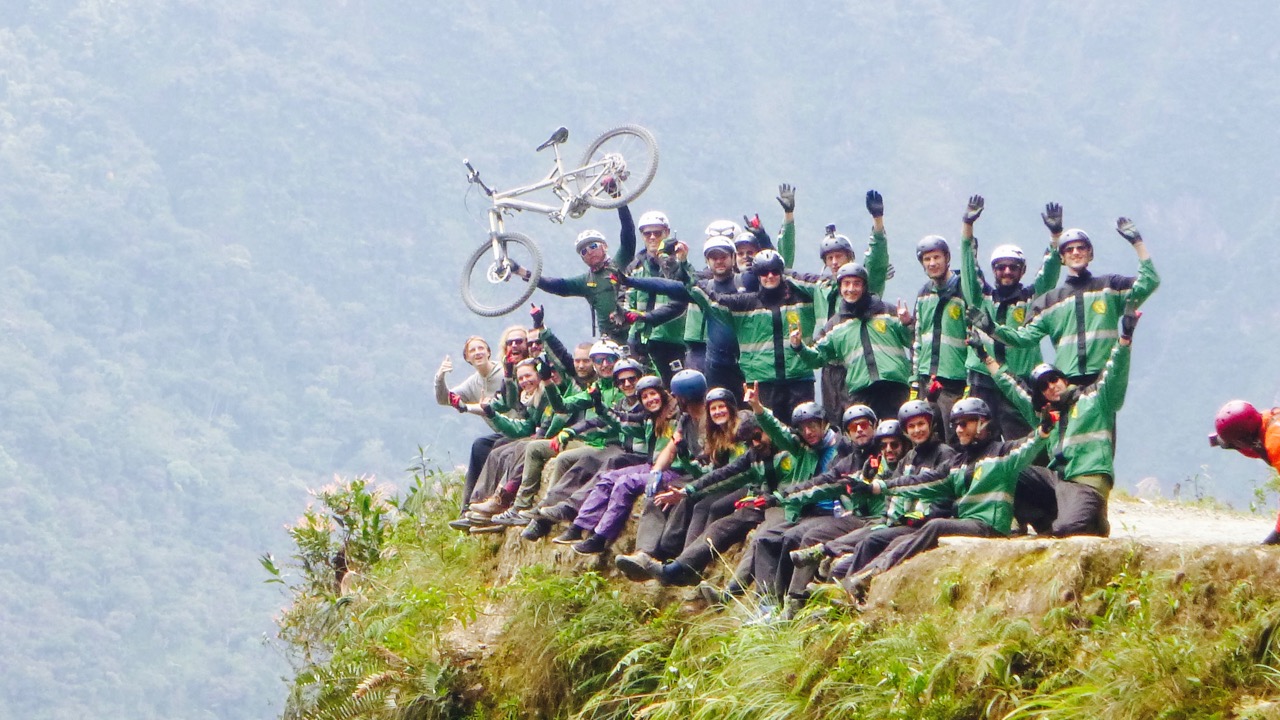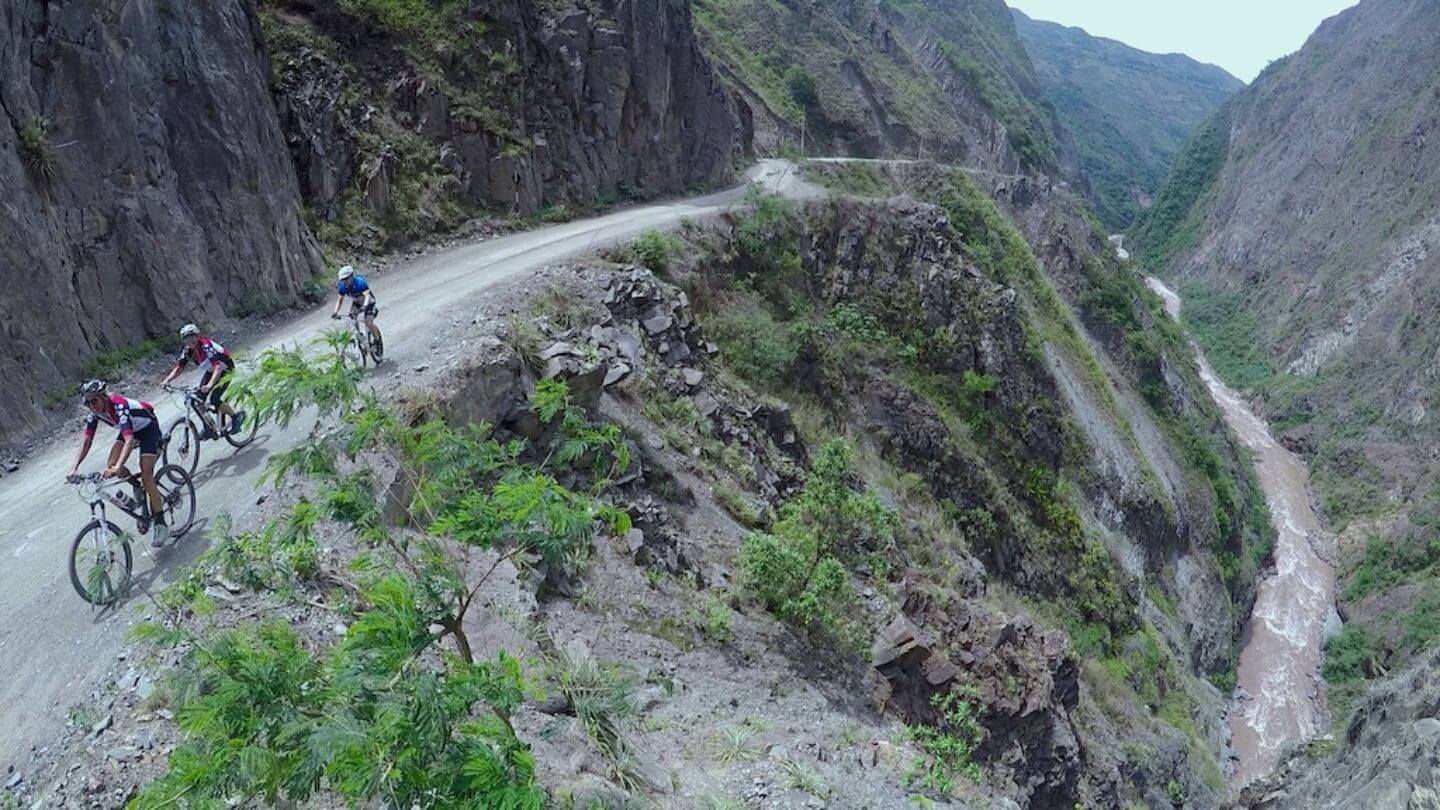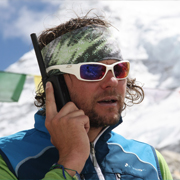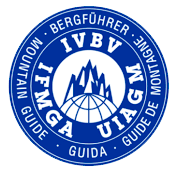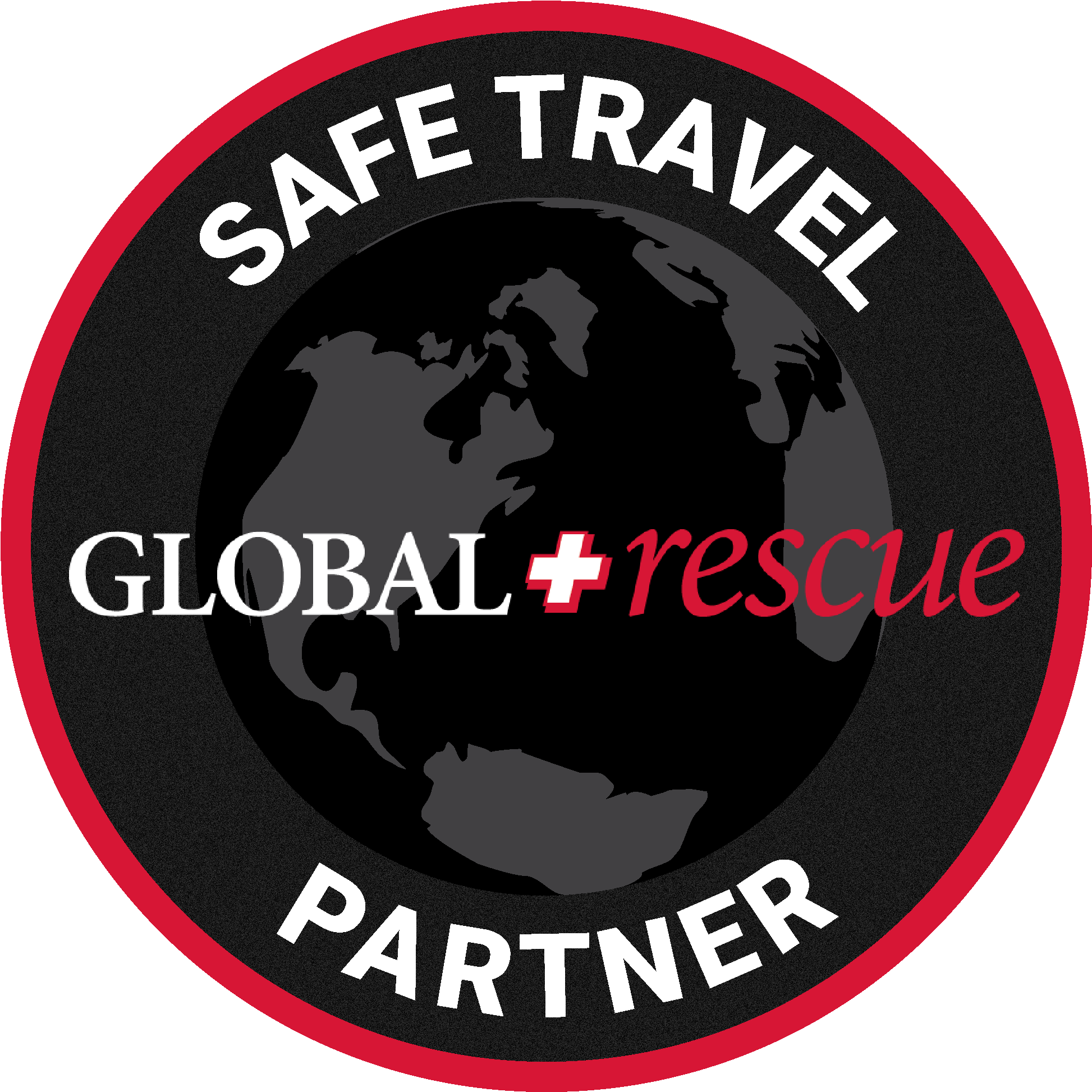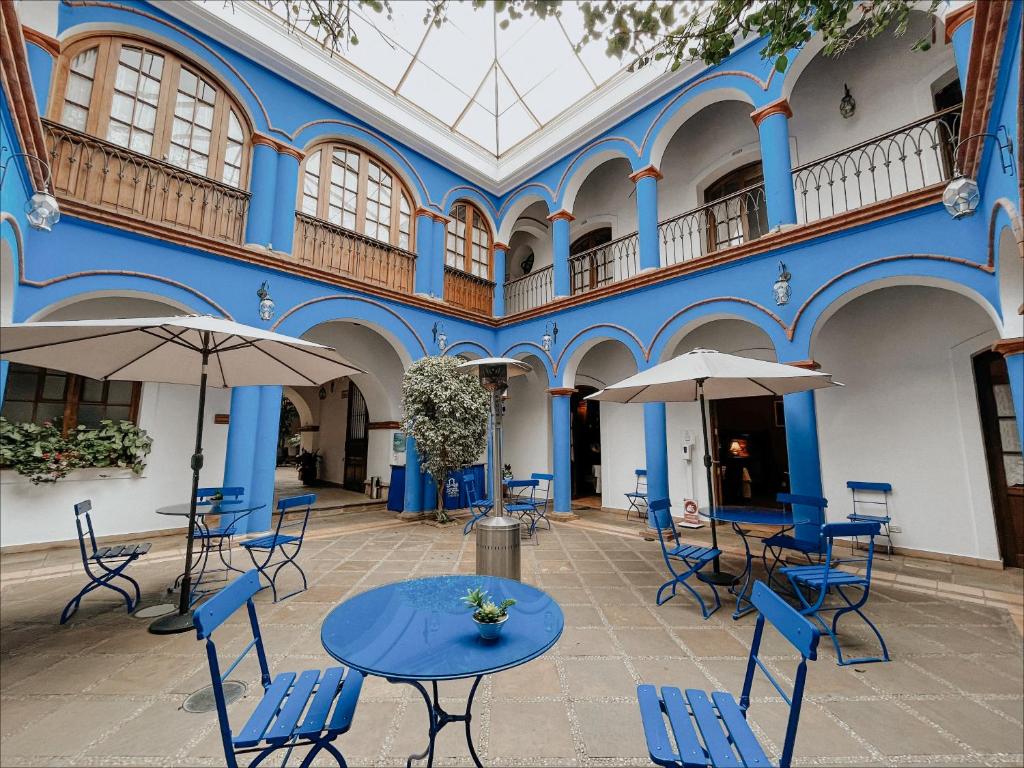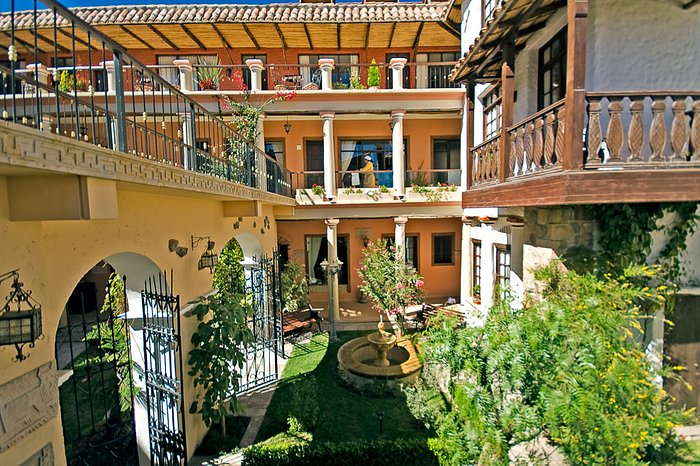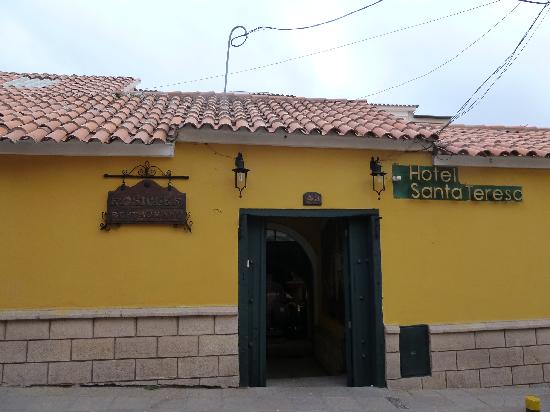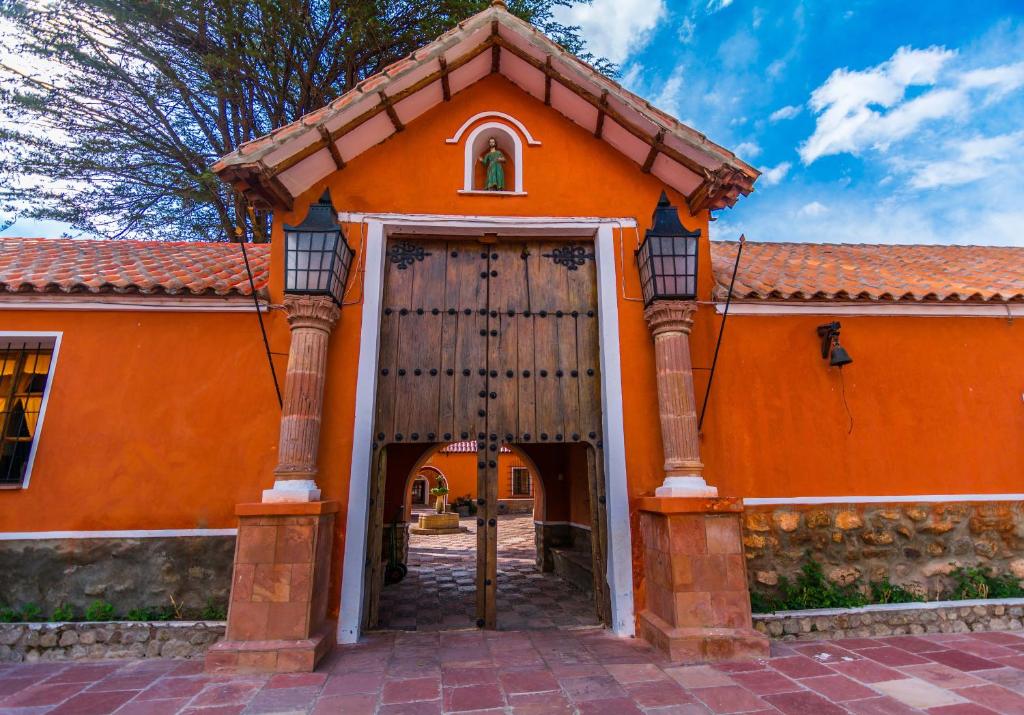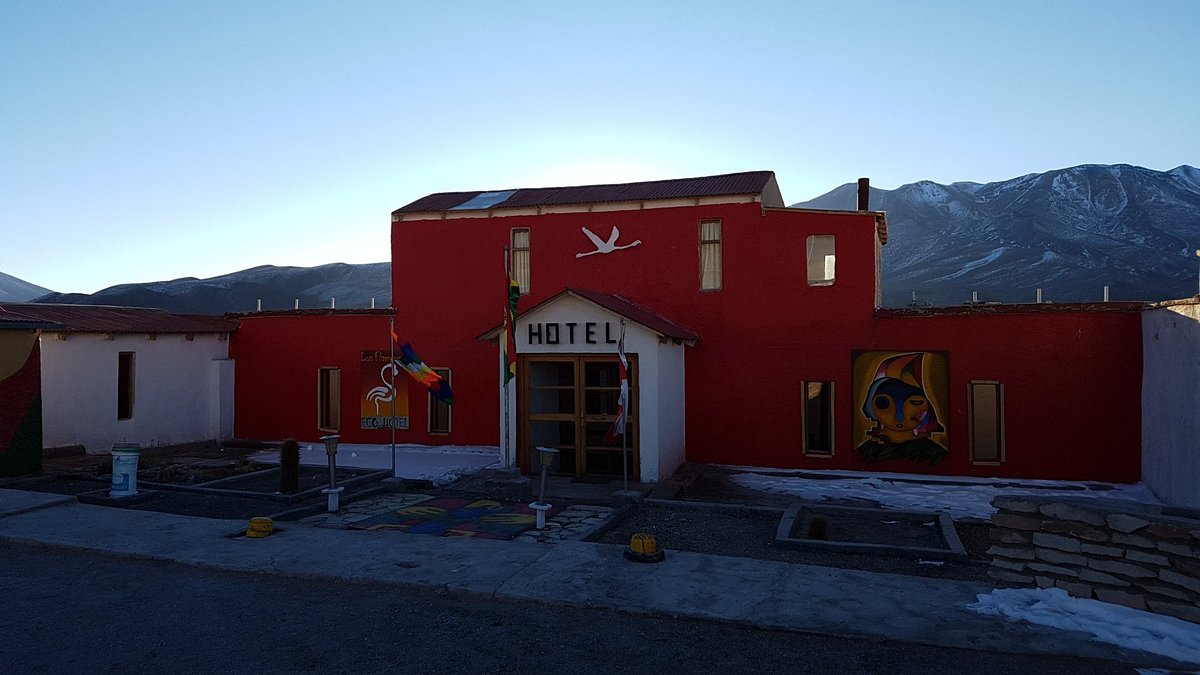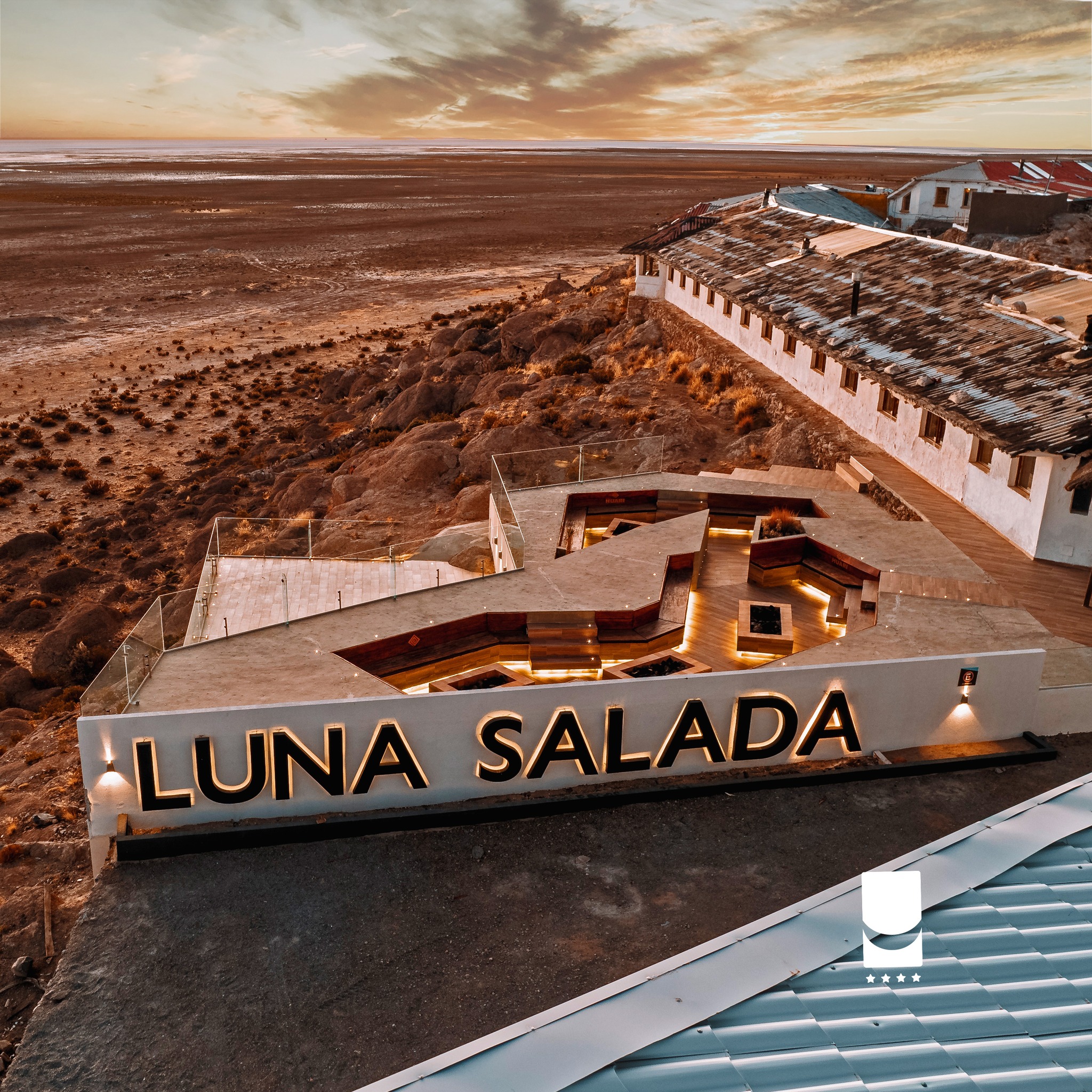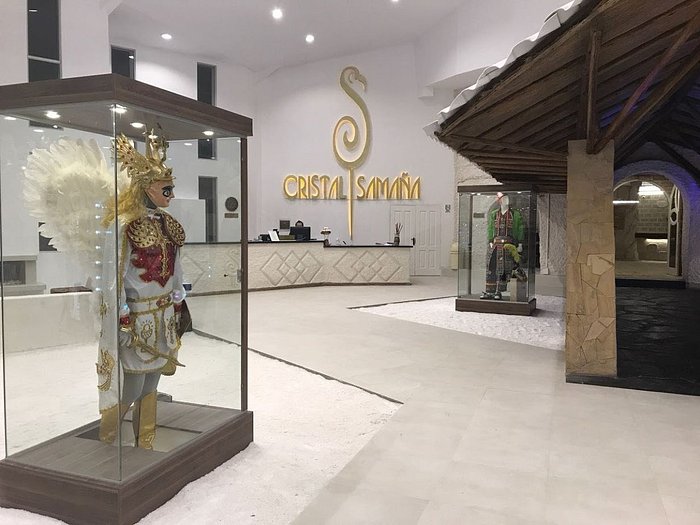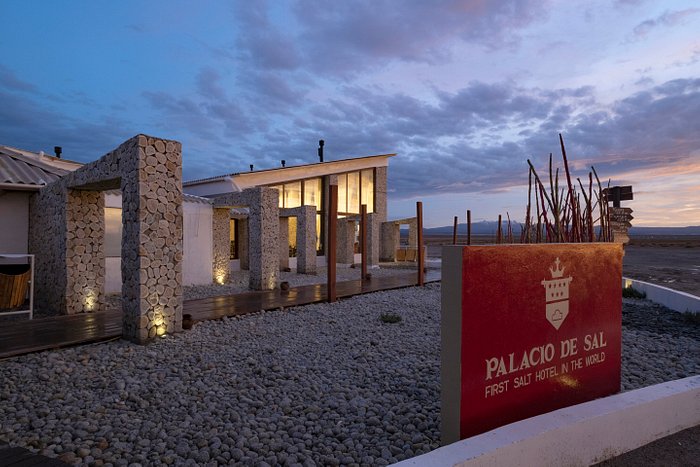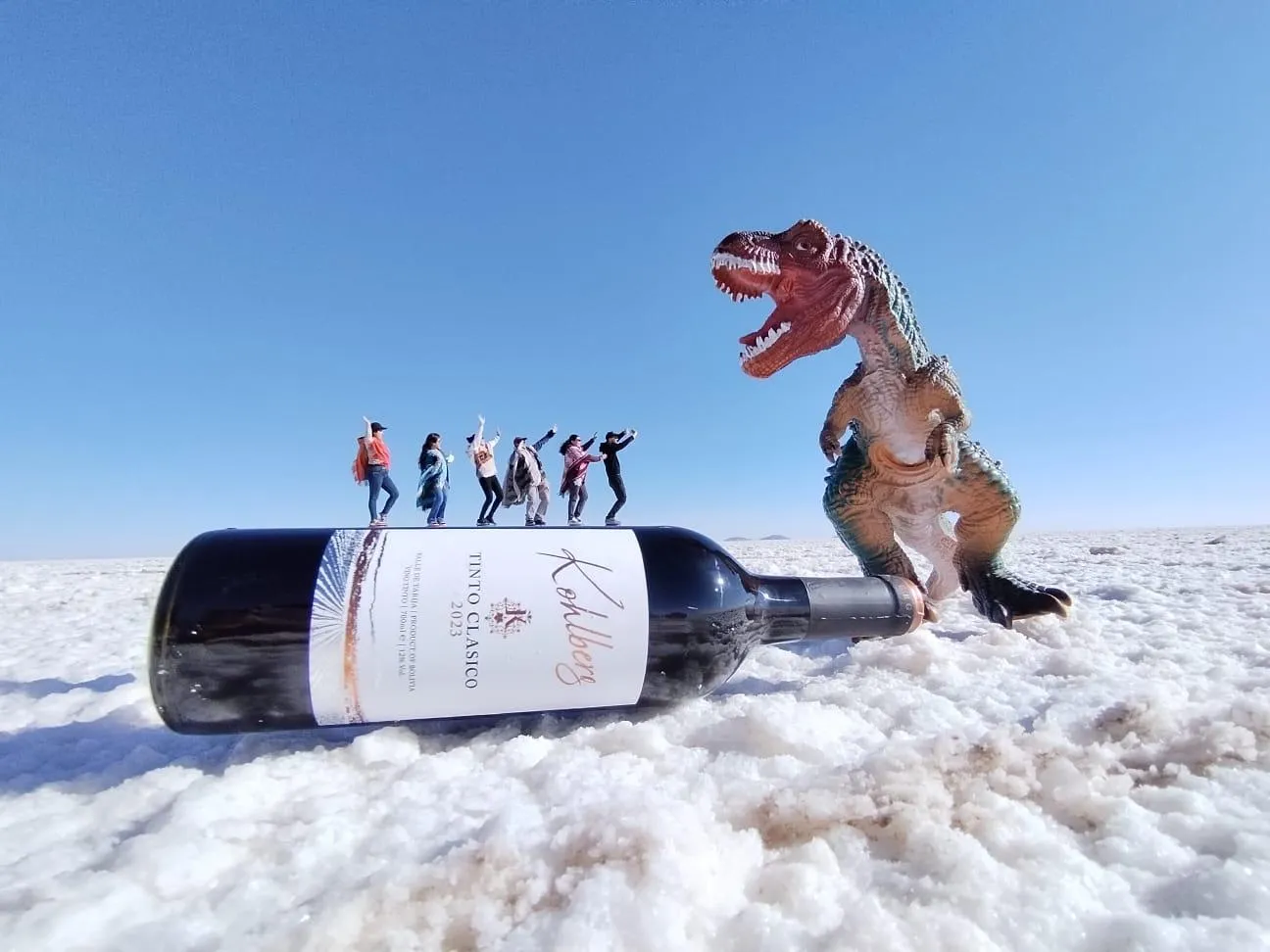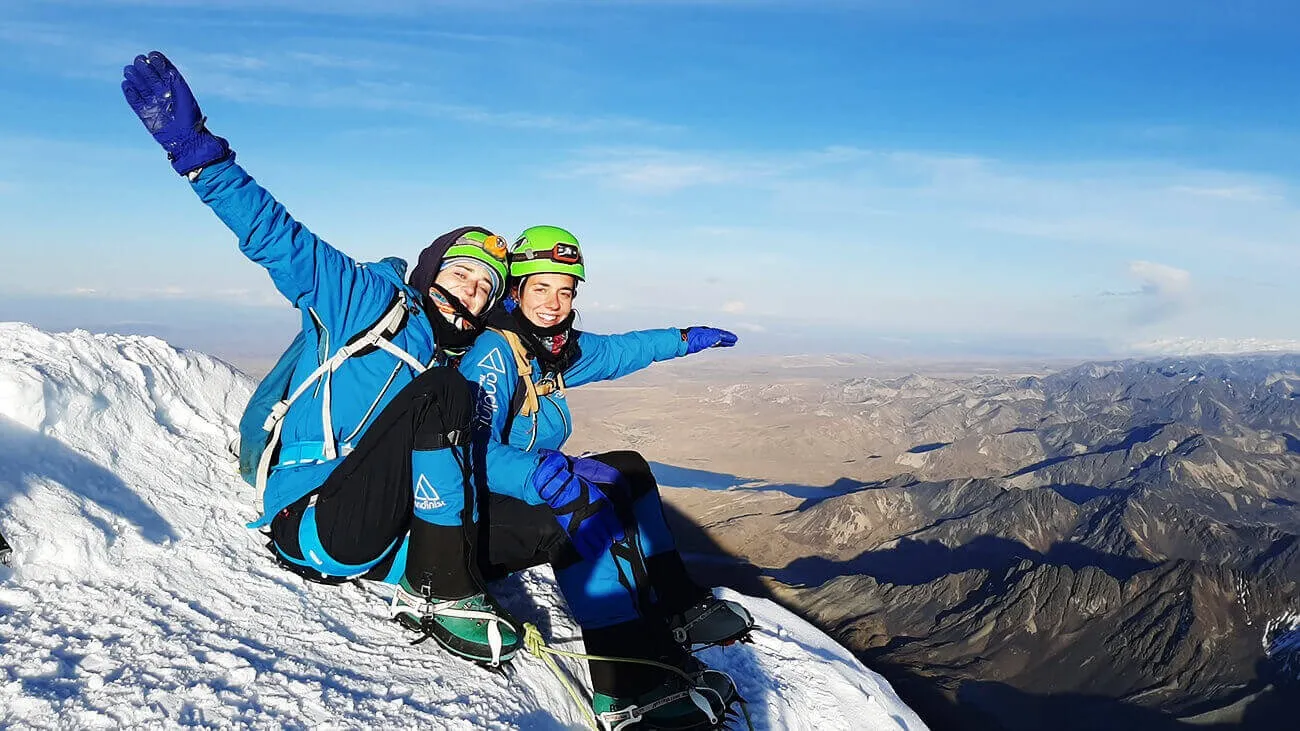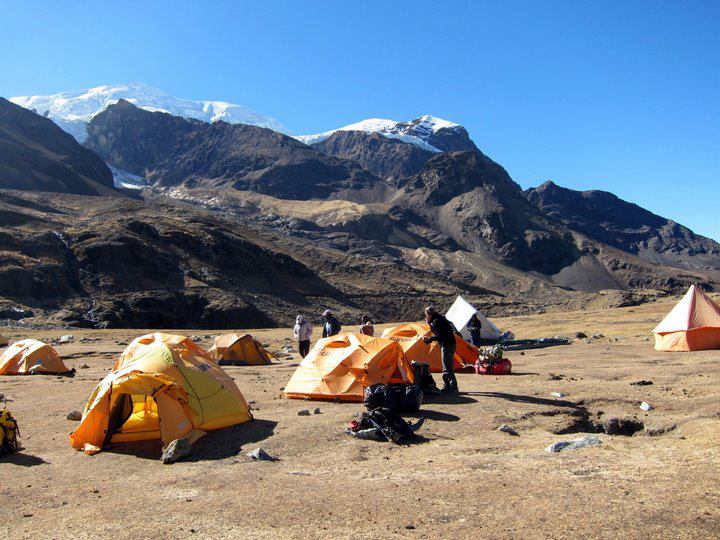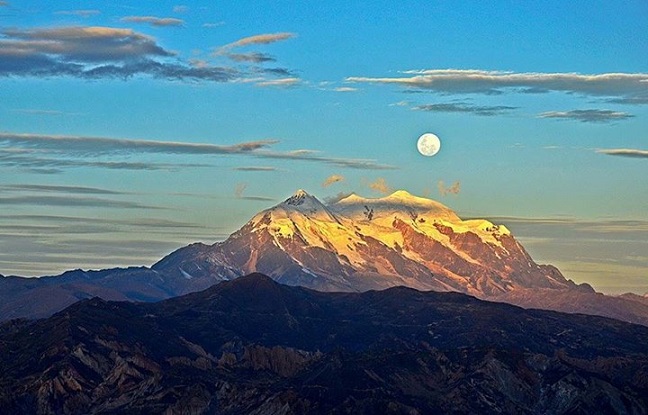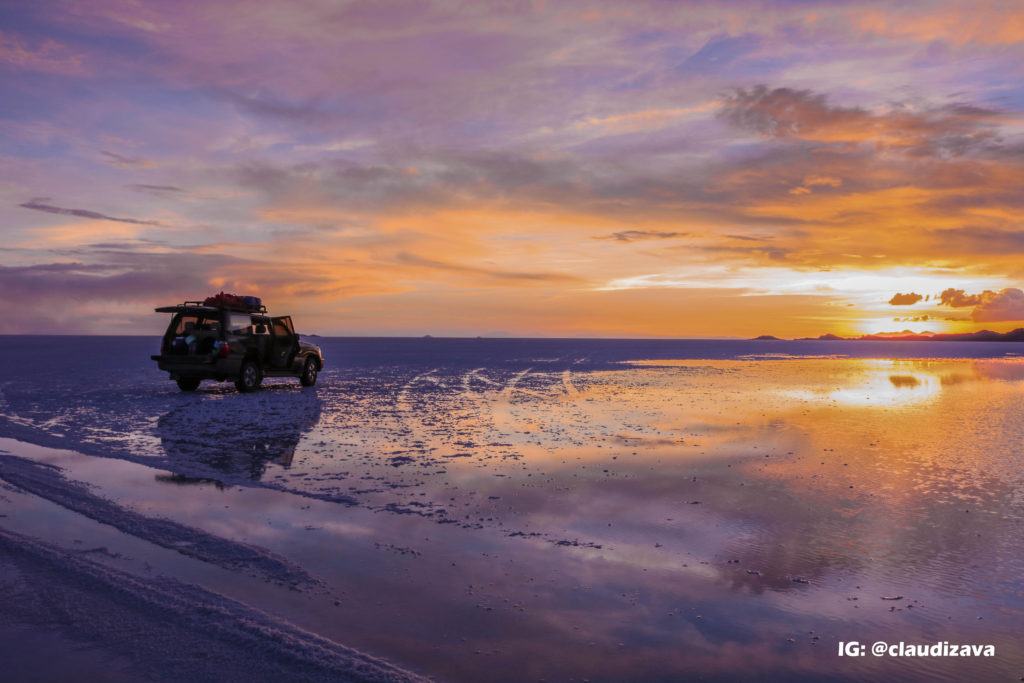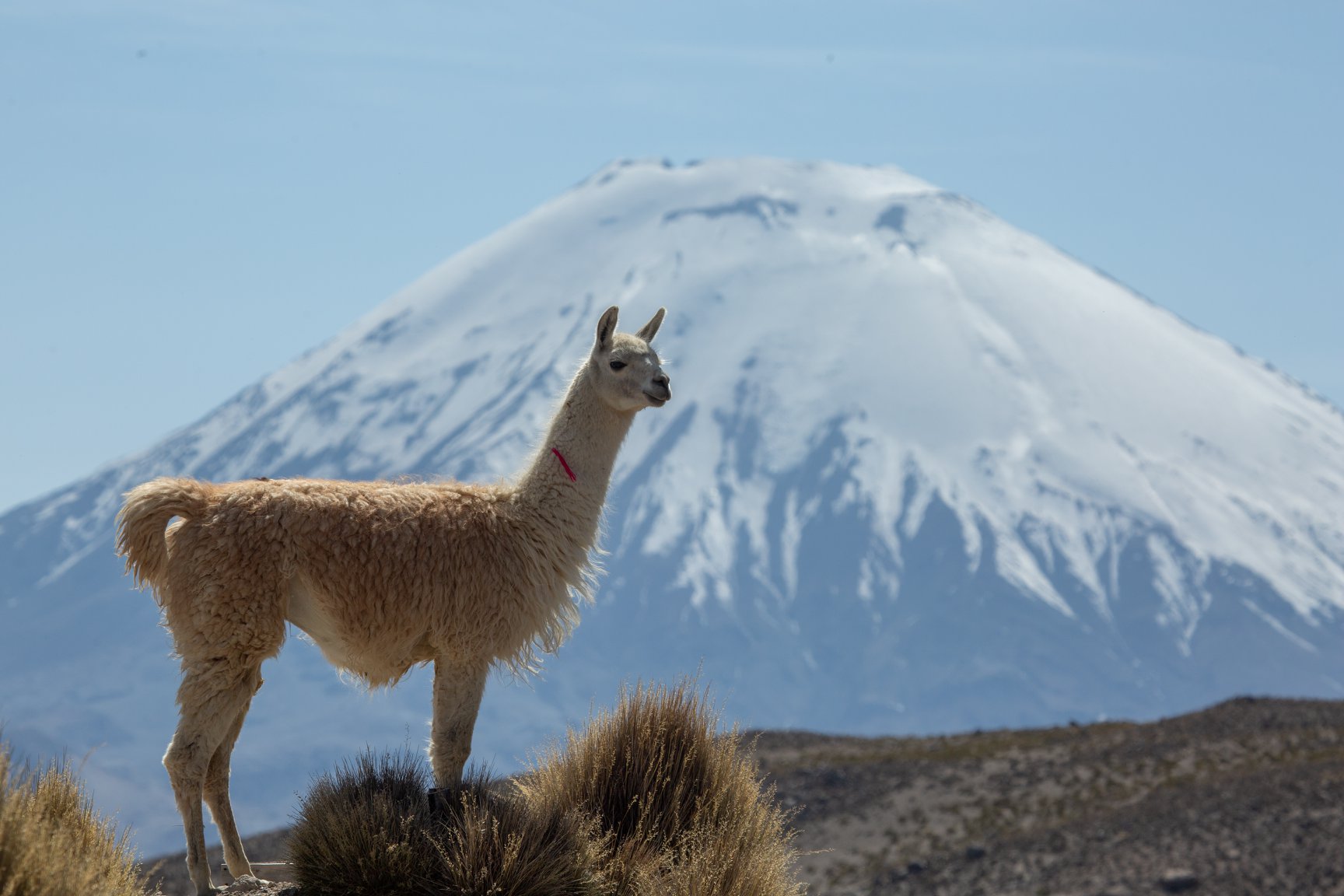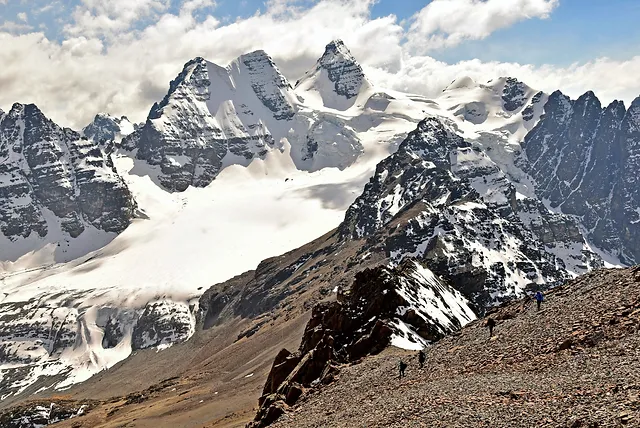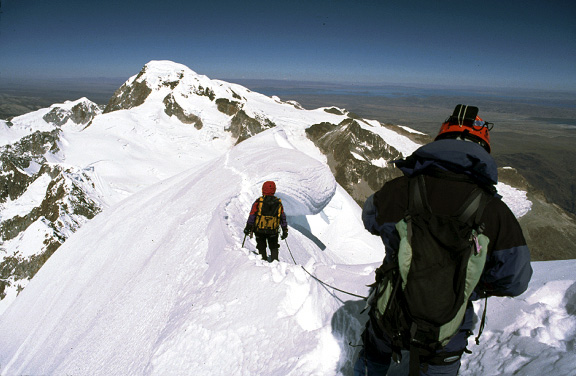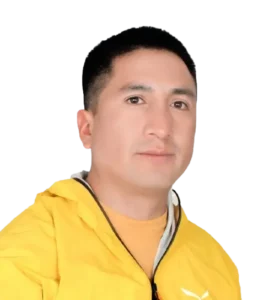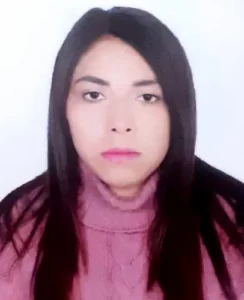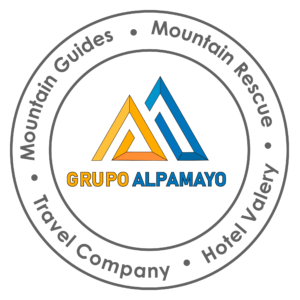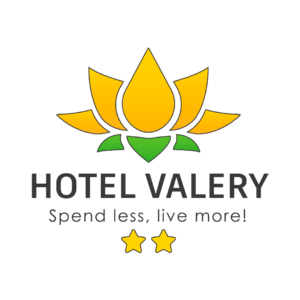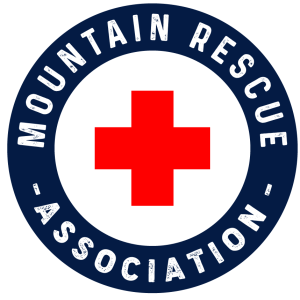From Lake Titicaca via the Salt Lake to the Death Road
Bolivia, the cradle of ancient cultures, is the heart of South America. Hardly any other country in Latin America is so original, both culturally and scenically. We meet the reserved, proud, predominantly indigenous people at their work in the gold mining towns, in the Salar de Uyuni with salt mining and in the fields with quinoa, corn and potato cultivation. Even today, the “cholitas” with their many colorful skirts and the typical bowler hats are part of the traditional village picture. During our adventurous journey we bike along the barren Cordillera Real, on the wide Altiplano at over 4000 m and down the death road into the tropical lowlands. The unique wildlife, the grandiose landscapes with volcanic cones, salt lakes, picturesque lagoons,
Highlights
- Sun Island in Lake Titicaca
- Flamingos at the colored lagoons
- Biking on the largest salt lake in the world
- “Carretera de la muerte”, the death road
- Witches Market in La Paz
- 19 Days/ 18 Nights
- January - December
- Moderate
Difficulty

Condition

Travel Program
1st-2nd Day: Flight to Sucre
We fly to Sucre (2800 m), the official capital of Bolivia. (However, the seat of government is in La Paz.) We take it easy on this first day in the Andean country, strolling through the alleys, visiting some sights and tasting the “mate de coca” tea, which according to the locals helps with acclimatization .
Day 3: First impressions of Bolivia
Day 4: Silver City of Potosi
Initially with the support vehicles, then with the bikes we make our way to Potosi. Among other things, we enjoy a long downhill to the Rio Pulacayo. Thanks to silver mining, Potosi was one of the largest cities in the world in the 17th century, comparable to Paris or London. Even today, the mining of silver and tin is an important branch of the economy. It is not for nothing that the mountain next to the town is called “Cerro Rico”, rich mountain. On a walk through the silver city we visit, among other things, the Casa de Moneda, the former royal mint. Later we get on our mountain bikes again for the ride to today’s stage destination Cayara. The lower altitude is conducive to the acclimatization process. We spend the night in a historic hacienda.
Bike route: 25 km, 350 m ascent
Transfer: jeep 3-4 h
Day 5: Silver mine and railway graveyard
Today we bike through the Andean highlands and let the silence and the impressive landscape enchant us. On the way we make a stop at a silver mine and learn a lot about the mining and the hard life of the workers. Shortly before Uyuni we visit the unique railway cemetery, with its rusty steam giants from bygone times. They lie bizarrely in the deserted steppe and offer wonderful photo subjects.
Bike route: 23 km, 100 m
ascent
Day 6: High valley on a distant planet
Our 4 x 4 vehicles take us to the starting point of today’s bike stage. Now it gets adventurous. We leave the dusty main road and bike along a secluded trail along glowing red rock formations. The high valley could be on a distant planet. Tired and content, we reach the original hotel built on a rock in Villa Mar. We enjoy a “mate de coca” tea and a cozy get-together by the warm stove fire.
Bike route: 40 km, 300 m ascent
Transfer: jeep 2 h
Overnight stay: original rock hotel in Villa Mar (4000 m)
7th-8th Day: Lagoons and volcanoes
We bike on gravel roads in secluded high valleys between imposing volcanic cones and past beautifully colored lagoons. In this spectacular landscape we can spot the shy vicuñas, flamingos and, with a bit of luck, viscachas, a native species of rodent, or even a desert fox. The wonderful light moods and the unique natural landscapes enchant us again and again.
Bike routes: Day 11: 42/70 km, 300/1000 m ascent, Day 12: 33/50 km, 350/450 m ascent
Day 9: Salar de Uyuni, the largest salt lake in the world
Today we experience one of the biggest highlights of Bolivia, the largest salt lake in the world, the Salar de Uyuni. After a coffee break on the cactus island Incahuasi, which is located in the middle of the salt lake, we jet over the flat salt crust. We experience the dimensions of this huge, white glowing salt surface, each in its own rhythm. We have enough time to take funny and original photos. In Colchani we learn more about salt production and stay overnight in a stylish salt hotel.
Bike route: 40/80 km
Day 10: Wild mountains of the Cordillera Real
We take a domestic flight to La Paz. After a jeep ride across the barren Altiplano, we soon see the mighty, deep-blue Lake Titicaca on the edge of the snow-capped Cordillera Real. We mount the mountain bikes on the La Cumbre pass. Either on the main route or on uncompromising trails, we really let it rip through a rugged, secluded valley. We soon reach our destination, the former gold mining town of Sorata.
Bike route: 36 km, 200 m ascent
Transfer: Jeep 3-4 h
Day 11: Chuchu Pass and La Gruta
Today we also test our downhill qualities at high altitudes. Views into deep gorges teach us to fear. At the foothills of the two 6000m Illampu and Ancohuma, we let ourselves be chauffeured to the Chuchu Pass at over 4500 meters. Depending on our mood, we bike on demanding trails or curve down a natural slope. Beautiful plays of light and clouds accompany our descents through abandoned mountain farming villages – while the gold miners wonder what we are looking for up here. After visiting the San Pedro grotto, we pedal back to our hotel.
Bike route: 32/40 km
Day 12: Views of the deep blue Lake Titicaca
With the escort vehicle we drive through traditional villages and reach the strait of Lake Titicaca. A traditional, simple wooden ferry takes us to the other side. From here we swing onto the bike saddles and enjoy the hilly route over the back of the Copacabana Peninsula with beautiful views of the lake and the majestic snow-capped peaks of the Cordillera Real. For adventurous bikers, one of the routes leads on a single trail through wild terrain. If you prefer to take it easy, choose the gravel path. A boat takes us to the sunny island, where we reach our romantic accommodation after a short climb on foot, tired and full of impressions. It is surrounded by terraced fields and offers us a fantastic view.
Bike route: 35/50 km, 700/1000 m ascent
Transfer: jeep 3 h, boat 1 h
Day 13: The quiet sunny island
We let ourselves be enchanted by the first rays of sunshine behind the Illampu and enjoy the fresh, clear air. Today we lace up our trekking shoes and take a walk on the sunny island with fantastic views over Lake Titicaca. With reverence we learn some details about the origin of the Tiwanaku and Inca cultures and their sacred Lake Titicaca, which used to be the seat of the gods, as the sun god is said to have been born on this island. We treat ourselves to a typical lunch (more will not be revealed). There is enough time to relax or to explore on your own.
Trekking: 2-3 h (optional)
Day 14: Via Copacabana to La Paz
We take the boat to the lively harbor town of Copacabana. At least the crescent-shaped curve of the bay is reminiscent of the world-famous district of Rio de Janeiro. We have time to visit the town with its basilica built in Moorish style. The “Virgen Morena” (dark maiden) exhibited there makes Copacabana the most important place of pilgrimage in Bolivia. We then drive on a panoramic route with the jeeps in the direction of La Paz. The city is located at the foot of the local mountain Illimani in a funnel valley that extends at an altitude of 3500 to 4100 meters and on the slopes of which thousands of houses stick closely together. With the cable car we float over the huge sea of houses. La Paz’s cable car network consists of ten lines and is the largest urban cable car network in the world. For the locals this is a practical and efficient means of transport, for us visitors it is an exciting attraction. There is enough time to stroll through the streets and to visit the unique, colorful and eclectic witches’ market and other sights of La Paz.
Transfer: boat 1 h, jeep approx. 3 h
Day 15: The world-famous Road of Death
With the escort vehicles we get to the starting point of today’s adventure: the descent on the “Carretera de la Muerte”, the death road. At the beginning still wrapped up thickly, we get rid of our many covers as the altitude decreases. The landscape changes impressively during the descent, from the barren mountain heights we reach a tropical forest. Looking at the deep gorges and tight curves, we are grateful that motorized traffic has recently been routed over a new road. Arriving at our destination for the day in Coroico, we enjoy the warm temperatures and the lush green vegetation in the tropical lowlands (Yungas).
Bike route: 65/73 km, 100/600 m ascent
Transfer: jeep approx. 2 h
Day 16: Rest day in the Yungas
Day 17: Bike tour to La Paz
Back on the El Cumbre pass we mount the bike for the last time. Passing mines and slate quarries, we enjoy the descent towards La Paz. From far up we have a wonderful view of the city.
Bike route: 20/25 km, 350/400 m
ascent
Day 17: Airport Transfer / International Flight
Transfer from hotel to the airport (3 hours before our international flight).
Day 19: Arrival in Europe
Arrival at Home
Included meals: B=breakfast; L=lunch; D=dinner
What's Included
Included
- Domestic flight Uyuni-La Paz
- Flight taxes and fuel surcharges
- Support vehicle and transfers (jeep/boat)
- 16 nights in a hotel in a double room
- Breakfast the whole trip
- 10 lunch meals
- 8 dinners
- Entrance fees and visits according to the programme
- Local English-speaking tour guide
- Bike Adventure Tours guide
Not included
- Meals and beverages not listed
- Tips for local team
- Flight Europe, USA, La Paz-Round trip
- Transport your own bike
- Cancellation cost and assistance insurance
- Possibly small group surcharge
What to Bring
What to Bring or take fo Day Hiking and Technical Equipment for Climbing Expedition
This equipment list is compiled to provide you with adequate help when choosing your equipment for a climb. Most items are required. Please consider each of them and make sure you understand the function and exclusive use for mountaineering, before substituting or removing items from this list. Please note that this list has been carefully annotated by the organizer. Remember that mountaineering, climbing or mountain expeditions tours is an extreme, risky sport, therefore everything related to it is of great attention.
Equipment Trekking
![]() Hiking backpack for hiking 50 to 60 liters
Hiking backpack for hiking 50 to 60 liters
![]() Light gloves for hiking or (Optional Mittens waterproof)
Light gloves for hiking or (Optional Mittens waterproof)
![]() Medium weight socks
Medium weight socks
![]() Sleeping bag (-15º to 20ºC)
Sleeping bag (-15º to 20ºC)
![]() Small daypack for one day hiking 30 liters
Small daypack for one day hiking 30 liters
![]() Weather-appropriate clothing (think moisture-wicking and layers)
Weather-appropriate clothing (think moisture-wicking and layers)
![]() Hiking boots or shoes
Hiking boots or shoes
![]() Medium weight parka with fibber fill or down
Medium weight parka with fibber fill or down
![]() Rain poncho (or rain gear)
Rain poncho (or rain gear)
![]() Long-sleeved shirts
Long-sleeved shirts
![]() Fleece or Wool sweater and/or trousers
Fleece or Wool sweater and/or trousers
![]() Lightweight pants
Lightweight pants
![]() Cotton short-sleeved shirts or t-shirts
Cotton short-sleeved shirts or t-shirts
![]() Water bottle for hiking or trekking
Water bottle for hiking or trekking
![]() Strong waterproof duffel bag
Strong waterproof duffel bag
![]() Flashlight with spare batteries and bulb
Flashlight with spare batteries and bulb
![]() Towel for personal hygiene each participantFirst-aid kit
Towel for personal hygiene each participantFirst-aid kit
![]() Regular and long underwear
Regular and long underwear
![]() Knife or multi-tool
Knife or multi-tool
![]() Light cap and wool hat
Light cap and wool hat
![]() Sunglasses with UV certification, Sun block, lips
Sunglasses with UV certification, Sun block, lips
![]() The rest of the list Essentials as appropriate for your hike
The rest of the list Essentials as appropriate for your hike
![]() Grooming and personal hygiene kit
Grooming and personal hygiene kit
![]() One Hiking Buff per person
One Hiking Buff per person
Equipment Mountain
![]() 3 Locking carabiners, we recommended per person
3 Locking carabiners, we recommended per person
![]() We recommend 2 ice screws for each client
We recommend 2 ice screws for each client
![]() 1 Daisy Chain (Life Line) per each person
1 Daisy Chain (Life Line) per each person
![]() 2 Ice axes (per person) technical, we recommended GRIVEL company
2 Ice axes (per person) technical, we recommended GRIVEL company
![]() 1 ATC descender (Rappel), this is very necessary for technical mountains
1 ATC descender (Rappel), this is very necessary for technical mountains
![]() 2 Cords for prusik, very important (Size Cord 6 mm x 10 m. long)
2 Cords for prusik, very important (Size Cord 6 mm x 10 m. long)
![]() Gloves(Good gloves) for expeditions over 6000meters
Gloves(Good gloves) for expeditions over 6000meters
![]() Harness for climbing
Harness for climbing
![]() Sleeping pad / Mattress, we recommend with air or inflatable mattress
Sleeping pad / Mattress, we recommend with air or inflatable mattress
![]() Crampons, we recommended GRIVEL company
Crampons, we recommended GRIVEL company
![]() Walking sticks – Trekking Poles (optional), a pair per person, we recommended GRIVEL company
Walking sticks – Trekking Poles (optional), a pair per person, we recommended GRIVEL company
![]() Down Jacket for expedition
Down Jacket for expedition
![]() Very important to have personal clothing such as pants and jacket with GOROTEX certification
Very important to have personal clothing such as pants and jacket with GOROTEX certification
![]() First aid kit, for high mountains, because we as guides cannot medicate clients
First aid kit, for high mountains, because we as guides cannot medicate clients
![]() Backpack Capacity 60 liters, it is better to have a bigger backpack to go comfortably to the high camps, because here you have to carry all your personal things
Backpack Capacity 60 liters, it is better to have a bigger backpack to go comfortably to the high camps, because here you have to carry all your personal things
![]() Gaiters or Leggings, now modern boots already have built-in (Incorporated), but better to have an extra pair
Gaiters or Leggings, now modern boots already have built-in (Incorporated), but better to have an extra pair
Dressing appropriately for the mountains can make the difference between a pleasant trip and a really uncomfortable one. Clothing must provide the right degree of temperature, perspiration and be well ventilated. Preferably cotton clothing should be avoided, as in humid conditions they absorb body heat.
In general, the weather conditions in in the Andes of South America can vary from day to day and even throughout the day. Therefore, clothing must be versatile.
Please do not hesitate to contact us with any questions you may have regarding the necessary equipment.
Prices & Dates
FROM/TO
PRICE (USD)
TRAVEL STATUS
FROM/TO
PRICE (USD)
TRAVEL STATUS
–
FROM/TO
PRICE (USD)
TRAVEL STATUS
–
FROM/TO
PRICE (USD)
TRAVEL STATUS
–
- Single Supplement (I want my own room and tent) – $000 on request.
Please note: Insurance for emergency evacuation is required for this trip. Call for more details.
» Additional dates available upon request
» Rates may vary from July 26th to 31th for the national holidays
Prices (per person):
| 1 PAX | 2 PAX | 4 PAX | 6 PAX | 8 PAX | 10 PAX | 12 PAX | 14 PAX |
|---|---|---|---|---|---|---|---|
| 7900 USD | 3950 USD | 3800 USD | 3650 USD | 3500 USD | 3350 USD | 3200 USD | 3050 USD |
Deposit for reservations
— USD (– EUR) ✓ Full payment 40 days before. No refund if you cancel less than 30 days!
Places: 
Trip-code: Number ►PE-404
Duration: 17 days
Participants: Minimal: 2 Maximal: 15
Members: We don’t have an open group to join – We can open a new group – Contact us!
Country / Location: Bolivia
Mountain Guide: Eric Raul Albino Lliuya
Other dates / additional info: Contact us!
3% early bird discount when booking 6 months prior to departure 2024
Legend Booking-information:
EZZ Single room supplement
🟢 On this trip, places are still available.
🟡 On this trip, only a few places left.
🔴 This trip is sold out / closed.
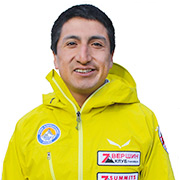
Eric Raul Albino Lliuya
Expert guide certified by AGOMP
General Sales Manager of Peru Expeditions
- WhatsApp: +51 943 081 066
- E-Mail: office@peru-expeditions.org
Hans Honold | Certified Mountain and Ski Guide
For a trip with a Professional Certified Mountain Guide from abroad with your own language that you speak, please request us to get in touch. We have guides working for our company from all over the world who are members of IVBV/UIAGM/IFMGA Certified Guides.
- Tel: +49(0)7344 929144-0
It is very important to have accident coverage for trekking and climbing mountains, more if you go a technical mountains over 6 thousand meters, we oblige and recommend buying travel insurance with our partner Global Rescue, you get the peace of mind that the finest medical, security evacuation, field rescue, intelligence and telehealth.
- Tel: +1 (617) 459-4200
Only $1000 deposit to book
Pay over time, interest free
No booking fee, no change fee
24/7 support
Accommodations
Scroll through our exclusive accommodations for this trip below. Although very unlikely, we will be able to make substitutions when necessary. The comfortable accommodations that guests stay in every night offer comfort, the level that these options are are 3 stars and some hostels in some towns of first class quality to make your stay very pleasant.
*These exact accommodations are not guaranteed. In some cases, alternative accommodation of similar quality and location can be used.
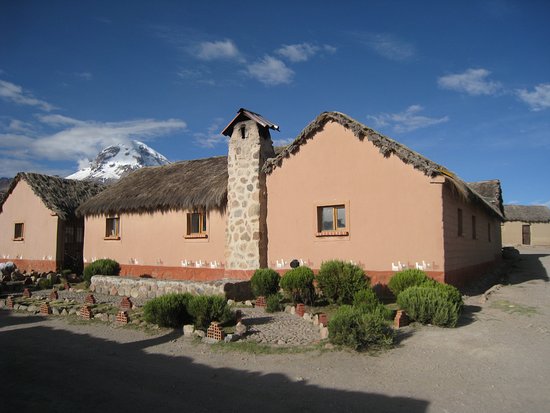
Albergue Ecológico Tomarapi
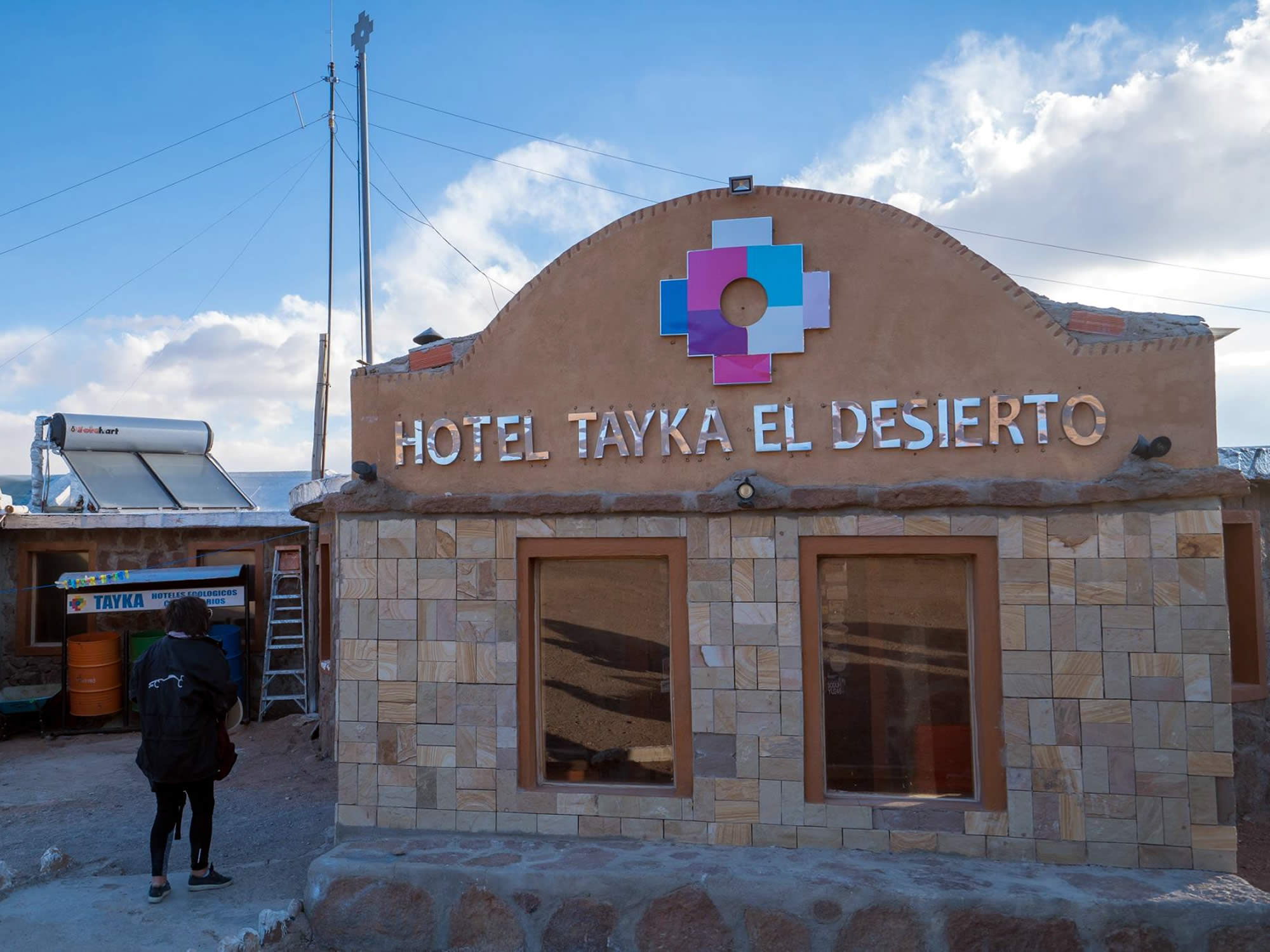
Hoteles Taykas
Videos
Frequently Asked Questions
What our travelers or clients always ask questions before joining our trips, tours & expeditions, read all the information provided here.
Suggested FAQs
What experience and how fit do I need to be to climb this mountain? Is this program suitable for children or older people?
For our mountain climbing trips: If they are easily accessible mountains: For easy-climb mountains, well, you don’t need much experience, but if you already want to climb mountains above 6,000 meters and the conditions become more difficult, we recommend if you already want to go through mountains above 6,000 meters, have a basic or intermediate course for a good preparation. It is very important to be physically, technically and psychologically prepared.
Regarding the preparation of children: Everything will depend on which mountain you want to climb with your children, once you are clear on which of our tours or mountains you want to go with your children, we can give you some advice or see how to prepare them before going with they.
Regarding older people: It all depends on the condition of experience and how well the person is in health, on many occasions older people are the best to walk in the mountains because they have more experience, so it is always good to ask and find out about their experience of older participant. If you have any other questions, please contact us. For calls or inquiries to this number: +51 943 081 066
Will I need to bring any technical equipment of my own? Is it possible to rent equipment, and if so, what would be the approximate cost of that?
In all our trekking or mountaineering trips we do not include personal equipment in our prices, so you have to have your own equipment: Personal equipment (such as boots, ice ax, crampons, harness, sleeping bag, mat, Goretex, etc. ) and also within each page of the trips that we sell is a small list so you can see it on our website.
Our company can also rent the materials that you would need for your trip, see the list here on our website: https://peru-expeditions.org/equipment-rental/ . For calls or inquiries to this number: +51 943 081 066
Are there any other special requirements such as permits/insurance/vaccines that I need to consider before the tour?
Safe and effective vaccines are available that provide strong protection against serious illness, hospitalization and death from COVID-19. Billions of people have been vaccinated against COVID-19. Getting vaccinated is one of the most important things you can do to protect yourself against COVID-19, help end the pandemic and stop new variants emerging.
We also recommend having accident insurance, we always recommend. We are Partners –Global Rescue. If you have any other questions about the trip we can schedule a date for a calling via WhatsApp. For calls or inquiries to this number: +51 943 081 066
What experience do I need to have? How fit do I need to be? Is this program suitable for children or older people?
To do long-distance hiking you need to at least train or do some tours such as visiting lagoons to get the experience and feel comfortable with what you do, it is always good before doing a long-distance hiking tour to test yourself so as not to be with the problems of altitude sickness during the trekking, and if you travel with children it is good to first train them before taking them, if they are accompanied by an adult of legal age, they must do a good acclimatization before going on the long-distance tour or with high altitude camps If you want to know or learn more advice, we can schedule a call via WhatsApp to clarify your doubts. For calls or inquiries to this number: +51 943 081 066
How far in advance should I start training and what kind of training do you suggest?
The preparation is according to what type and what technical level you want to go and climb a trek or mountain, the preparation will always gain experience little by little.
For this type of demanding or technical climbing sports, it is recommended to do some summits above 5 thousand meters beforehand and have good knowledge of high mountain technical equipment such as the use of technical ice axes, ice screws, correct use of crampons, and of course all the technical material. For more information, we can schedule an appointment to be able to explain in more detail everything about the mountain equipment and the preparations prior to joining our outings. For calls or inquiries to this number: +51 943 081 066
What is the average distance and altitude gain that we will hike each day?
Every day we have active walks around approximately 4, to 5 sometimes 6 hours of walking, everything is according to your pace and physical condition of each person, in each of our travel programs you will find more detailed information, and if If you need more information about each day of the travel program, we can schedule a call via WhatsApp to clarify your doubts or questions, for this please contact us. For calls or inquiries to this number: +51 943 081 066
Will there be porters to help to carry group and personal equipment?
In our trips, either hiking or mountaineering: Depending on the type or destination of the trip that you are going to book, in some parts of the treks you go with mules or donkeys or sometimes with horses, and within the mountain trips, the approach camps are also They go with mules or donkeys, but there are some stretches where pack animals can no longer reach. In this part, our logistics is fully supported by the porters.
Who are the porters? They are people from the area who were born and live in the heights of the towns, they are very strong and are very acclimatized, the reason is that after the tourist season ends they dedicate themselves to agriculture and livestock for that reason they are people They are used to the altitude and have lived in nature all their lives and they are happy to be in the mountains together with our expeditions. For calls or inquiries to this number: +51 943 081 066
How will accommodation and meals be handled during the trek?
About accommodation or meals during the tour: Well, depending on the type of tour, when the tour is a classic cultural tour or a city tour, we eat during the route in tourist restaurants and sleep in category hotels that the client has requested.
If the tour is with camps and trekking: During the activity, logistics we include the service of Breakfast, Lunch, and Dinner with traditional and typical meals of the region where you are going to travel with us, during the night we stay in tents, and we have a special tent for the kitchen and another for the dining room.
If the trip is at altitude or in the mountains: We bring special high mountain food, It are quicker meals to cook and we provide complete logistics such as Breakfast, Lunch and Dinner, and we sleep in special 4-season high mountain tents, with the best tents. If you have any questions or concerns, we can schedule an appointment via Whatsapp to clarify all your doubts and give you better information so that your trip is an unforgettable tour.
What is the guide-to-client ratio to climb this mountain?
In mountains above 5000 meters: A local guide takes a maximum of 3 clients = Ratio 3pax = 1 local guide
In technical mountains: In large-big mountains we manage the travel policy, a guide and a maximum of 2 clients = Ratio 3pax = 1 local guide. For calls or inquiries to this number: +51 943 081 066
What is the best time of the year to climb this mountain?
For all the trips that we offer within our main tourist destinations such as South America and Central America, also including the ascent of the 7 continents and the 7 highest peaks of each continent, on each page of our website for each trip we indicate that month or what season to travel, then please read the information you find in our travel offers for each tour. If you have any other questions you can contact us by WhatsApp with one of our travel experts. Thank you so much. For calls or inquiries to this number: +51 943 081 066
Do I have what it takes to succeed on this expedition?
In the interest of the team’s enjoyment and success, we work with every single guest to ensure they are properly prepared and ready for this expedition. We pride ourselves on vetting every member to make sure that the team can bond and succeed together. It really sucks to be grouped with members that are much faster, or much slower, than you are. No one wants to the weakest link on a trip like this. By setting expectations and a solid training plan, we work to insure maximum cohesive success. Use this trip as an exercise motivator, and we will succeed together with style.
How can I get to the trailhead/meeting point?
For the pick-ups of each trip, depending on the place or the trip that you are going to make with us, the meeting point is always at our office, in one of our trips we pick you up where you are staying or staying, or in some cases a A representative of our company will pick you up and then ship you to your transport to continue with your destination of the tour or trip you have booked with us. If you wish to request more information, do not hesitate to contact us. For calls or inquiries to this number: +51 943 081 066
What is the best time of the year for this hike?
For all the trips that we offer within our main tourist destinations such as South America and Central America, also including the ascent of the 7 continents and the 7 highest peaks of each continent, on each page of our website for each trip we indicate that month or what season to travel, then please read the information you find in our travel offers for each tour. If you have any other questions you can contact us by WhatsApp with one of our travel experts. Thank you so much. For calls or inquiries to this number: +51 943 081 066
What happens in the event of bad weather?
About the meteorological conditions of the climate, we try to organize the trips of each tour in the best season to have the best views and enjoy the selected trip but sometimes even is good season we can have bad weather, in this case on hiking or treks trips The complications are minimal, but when this happens during high-altitude climbing expeditions, the complications can become very difficult, that is why the bosses or leaders of the local guides must always make the most correct decision for the safety of our passengers, so we always recommend listening to the best advice from the local guide assigned for each tour. If you have any other questions please contact us. For calls or inquiries to this number: +51 943 081 066
Can I join a group?
We as a local company and connoisseurs of tours have departures on different dates. The best thing to do is to join a travel group to take care of your budget, and of course you can join our groups, but on trips like mountaineering we recommend going in small groups. To join a group, ask us for the dates and we will send you the necessary information to be able to join any of our trips.
Why go in a private trip: For trips whether trekking or high mountains, going privately is the most recommended option, but the costs are more expensive. So, if one joins a group, the prices will be more reasonable. In the mountains, the only disadvantage is if you are in a wall with another partner and if one of the participants gets tired or gets sick. In this case, you have to abort or cancel the summit and return together. For more information, contact us. We can schedule a call via WhatsApp to clarify all your questions.
In a mountain, for example, if 3 people go and one of the participants falls ill on the route, for security reasons they have to cancel or abort the summit or return all together. The same in a technical mountain if the climbing partner gets sick they all have to return, for these reasons sometimes it is better to go private only because for a single person the costs are more expensive for the same reason that the trip would already be private .
For more information please contact us. For calls or inquiries to this number: +51 943 081 066
